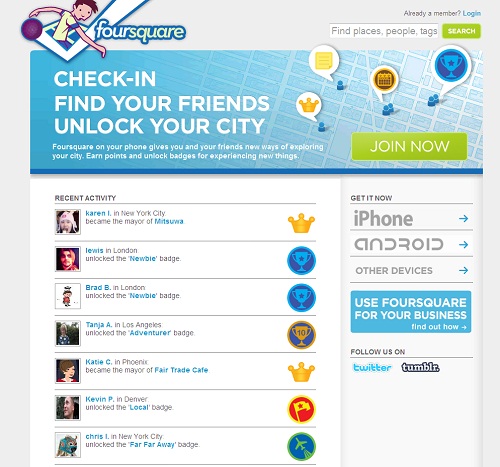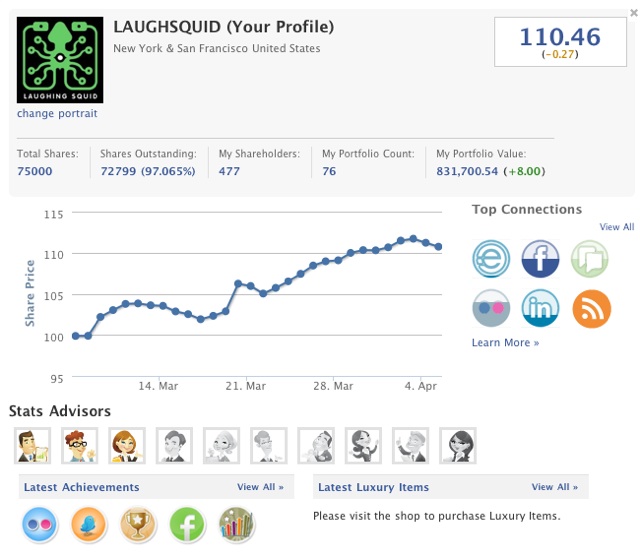“Gamification is the use of game thinking and game mechanics to engage audiences and solve problems.” [1][2] A wide range of industries (i.e. technology, health care, education, consumer products, entertainment and travel) see the potential of gamification as way to facilitate transfer (e.g. loyalty, a particular message, social interaction, knowledge, etc.) by enhancing or extending the engagement of targeted audiences (i.e. employees, students and consumers). From a game designer’s perspective it is an opportunity to expand one’s expertise and role into these industries.
The question is, what kind of game-play experiences can we stimulate with gamification? I believe that a good game provides an experience that inspires the player, and good gamification should also strive to achieve meaningful experiences. Gamification design is more than adding points and badges, and as design paradigms represent only the tip of the ice berg. We should be aware of all the design possibilities; therefore I offer this taxonomy of gamification possibilities based on Caillois’s four forms of play found in games. Caillois was a French intellectual that brought together literary criticism, sociology, and philosophy [3], he should be known to most game designers and is canon for game studies. In his book Man, Play and Games , he identified four forms play in games:
, he identified four forms play in games:
The question is, what kind of game-play experiences can we stimulate with gamification? I believe that a good game provides an experience that inspires the player, and good gamification should also strive to achieve meaningful experiences. Gamification design is more than adding points and badges, and as design paradigms represent only the tip of the ice berg. We should be aware of all the design possibilities; therefore I offer this taxonomy of gamification possibilities based on Caillois’s four forms of play found in games. Caillois was a French intellectual that brought together literary criticism, sociology, and philosophy [3], he should be known to most game designers and is canon for game studies. In his book Man, Play and Games
Agon, or competition.
Alea, or chance.
Mimesis, or mimicry, or role playing.
Ilinx, or vertigo, in the sense of altering perception.
I would argue that current gamification design discourse emphasizes Agon type game mechanics, where gamification creates competition. While leader boards are obvious forms of competition, achievements and points are more subtle but create status that motivates competition. Competition is not just multi-player, but also exists in single player games where players try to beat their high score. Some examples of Agon gamification would be something like foursquare and ContinentalAirlines- OnePass Frequent Flyer Program.
Alea are game mechanics that use speculation, gamboling and chance to engage target audiences. The potential to use luck oriented design paradigms could range from casino like gamboling to lotto games. An example of using Alea gamification would be Empire Avenue, where there is a stock exchange system that naturally induces speculation.
The third type of game-play is Mimesis, which has the user role-play to increase engagement in the non-game system. One could imagine that Mimesis design would feel more like a real game than other forms of gamification. For this reason something like Second Life, which was previously regarded as a serious game, is best considered a gamified social network.Another example of a Mimesis gamification would be the PlayStation®Home. In both examples the platform acts as a gateway to playing embedded games, but embedding games into a platform is not gamification. For example, Kongregate and Steam offer similar functionality, but are clearly not gamified by Mimesis.
Illinx gamification uses euphoria, vertigo and altered states of perception to engage target groups. We may well imagine that games of this type reward the player by euphoric feeling (when children get recess period at school) or by challenges the player to remain in control under vertigo (being on a roller coaster). An example of this form of gamification would be the transfer accelerator.
It should be obvious that the four forms of game play are not isolated or holy, and often coeist in a single design (e.g. Empire Avenue incorporates Agon- Alea) From these four basic forms Caillois combines them in an extended theory of six more forms of game play [3], which becomes interesting if you want a more concise taxonomy for analyzing forms of gamification. Unfortunately, that is outside the scope of this post, which simply attempts to inspire a consideration for other gamification design paradigms.
[2]  Zichermann, G (2011) 7 Winning Examples of Game Mechanics in Action, http://mashable.com/2011/07/06/7-winning-examples-of-game-mechanics-in-action/
Zichermann, G (2011) 7 Winning Examples of Game Mechanics in Action, http://mashable.com/2011/07/06/7-winning-examples-of-game-mechanics-in-action/




